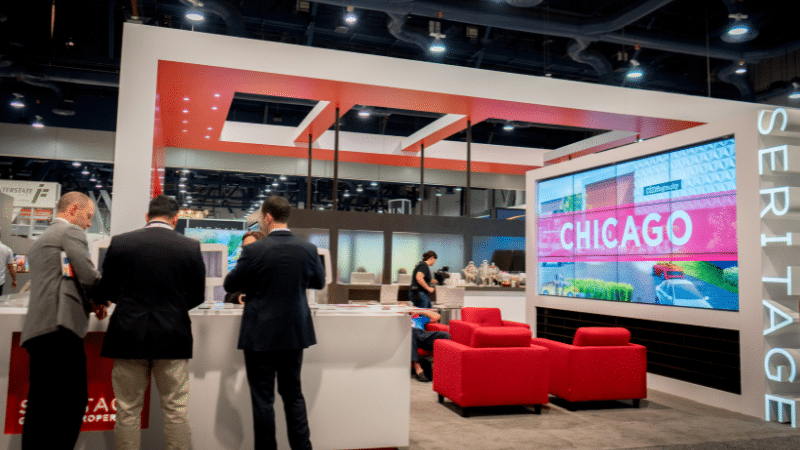Change by design
Freeman Design leaders sit down to talk about attendee expectations, change, and those darn Gen Zers.

Stephanie Bellay
Group Creative Director

Ethan Kent
Sr. Group Creative Director

Don Richards
VP, Executive Creative Director

Let’s start with the terms that are probably used as much as any in our industry: millennials and Gen. Z. How are their expectations impacting your experience design?

Gen Z and millennials both want to know why they need to be there, and we must make it worth their while. So, everyone’s expectations are bigger.

It’s becoming more apparent there’s this shift between what the traditional older audience might have wanted from an event or an experience and what the expectations are from millennial and Gen. Z. The old way of doing things isn’t going to cut it anymore.

One thing we’re doing is bringing their voice into the mix. They want you to make it personal to them.

I think that’s something that’s really important. So, do you think the breadth of audiences is what’s driving the desire for community and personalization?

I think inclusivity is driving it. Ideas that include inclusivity and diversity are just expanding.

Interesting. But what beyond that? What ways have you been able to bring people greater relevance to communities and connections?

One thing we’re doing more of is connecting attendees with content and directing them to the outcomes that they want. We have different narrative threads that people follow, like on a path, throughout the event. They’re using their phone, accessing content through mobile web. There are QR codes and augmented reality. Each point along the path gets you closer to where you want to end up in terms of your outcome. And what it really does best is it optimizes the time for the attendee. It optimizes the relationship between brand and attendee, and exhibitor and attendee. And it also makes the most of the space itself.

In the past it was sort of simple. The attendees would have a few things in common. So, we’re going to set up a table, and you can connect as you want to. That worked. But now we need to delve deeper into the personas of who’s there. It needs to be more than what they’re doing professionally. Now it needs to be more like, “what’s meaningful to you?” “What’s authentic to you?” And making sure those connections live deeper than the event, so those communities continue well beyond. The only way to really do that is to make the networking and face-to-face time deep and beyond surface-level. So that’s the challenge we have as creatives.

So, what do you think people most want to take away from events? What’s most important to them to take away?

They really want those “you had to be there to believe it” moments. That’s what’s important to them. They want meaningful and relevant content, contacts, and applicable learning. Especially when we’re talking about the millennial and Gen Z audiences. So, it’s not just enough to sort of set me down in the middle of an expo hall or general session and have me be a sort of passive participant.

I’m excited about the way that we rethink content because I’m a learner by doer. And so going to events where I sit in a content session, and I’m only being spoken to has never worked for me. I take copious notes, and then I go back and re-watch it like three times. But now we have an opportunity to have smaller events where you get more one-on-one time with either SMEs or practitioners, or even sort of executive touch points with your company, and I think that is an interesting thing that wasn’t possible before, when we are just looking at, like, butts in seats.

Remember the days when we like sit in general sessions, and everyone would be photographing the screen with their phone.

Yeah, yeah. Now they can screengrab virtual events, I guess. So, let’s wrap up with virtual as this is a big thing. I thought one of the interesting things about virtual during Covid, when people couldn’t gather live, is we would call them virtual events. But for the most part what they were websites, right? The material was pre-recorded. People watched it live but it wasn’t really live, right?

Yeah, and people might engage in real time but for the most part it’s stuff that could be done on that site throughout the rest of the year.

That mind share over time is hard to continue though. Data would show that after the event was done and the content was put on the site…

No one looked at it.

Yeah. Exactly. That’s hard to do. To drive more consistent engagement is the holy grail. I think that there are organizations that do that well. They have ongoing communications that can be linked back and keep engagement going. A few organizations in the tech space do this well. That can be powerful.

How are you going get me to go back later, right?

Getting these to extend is another big challenge in the industry and a big opportunity.


